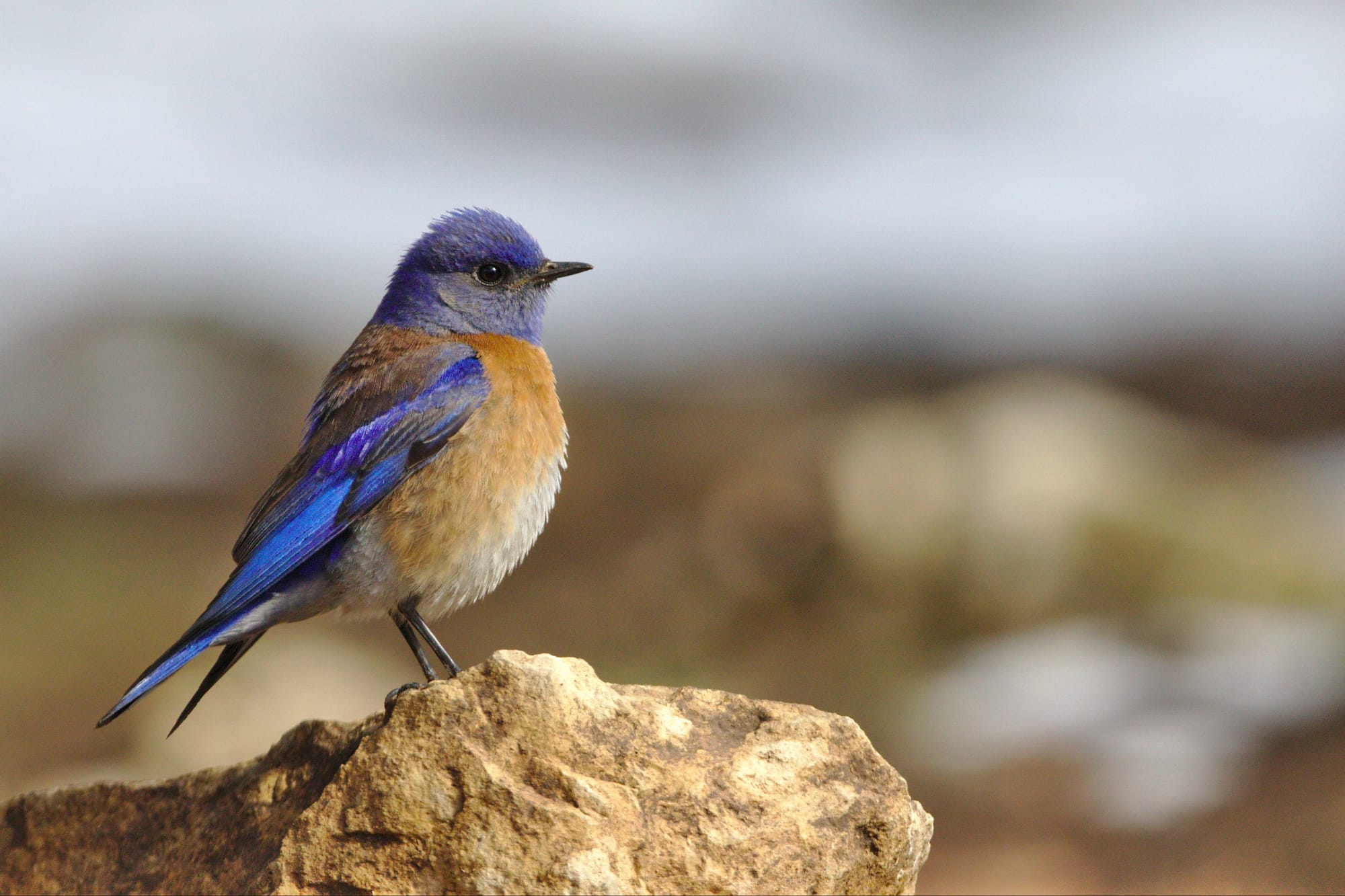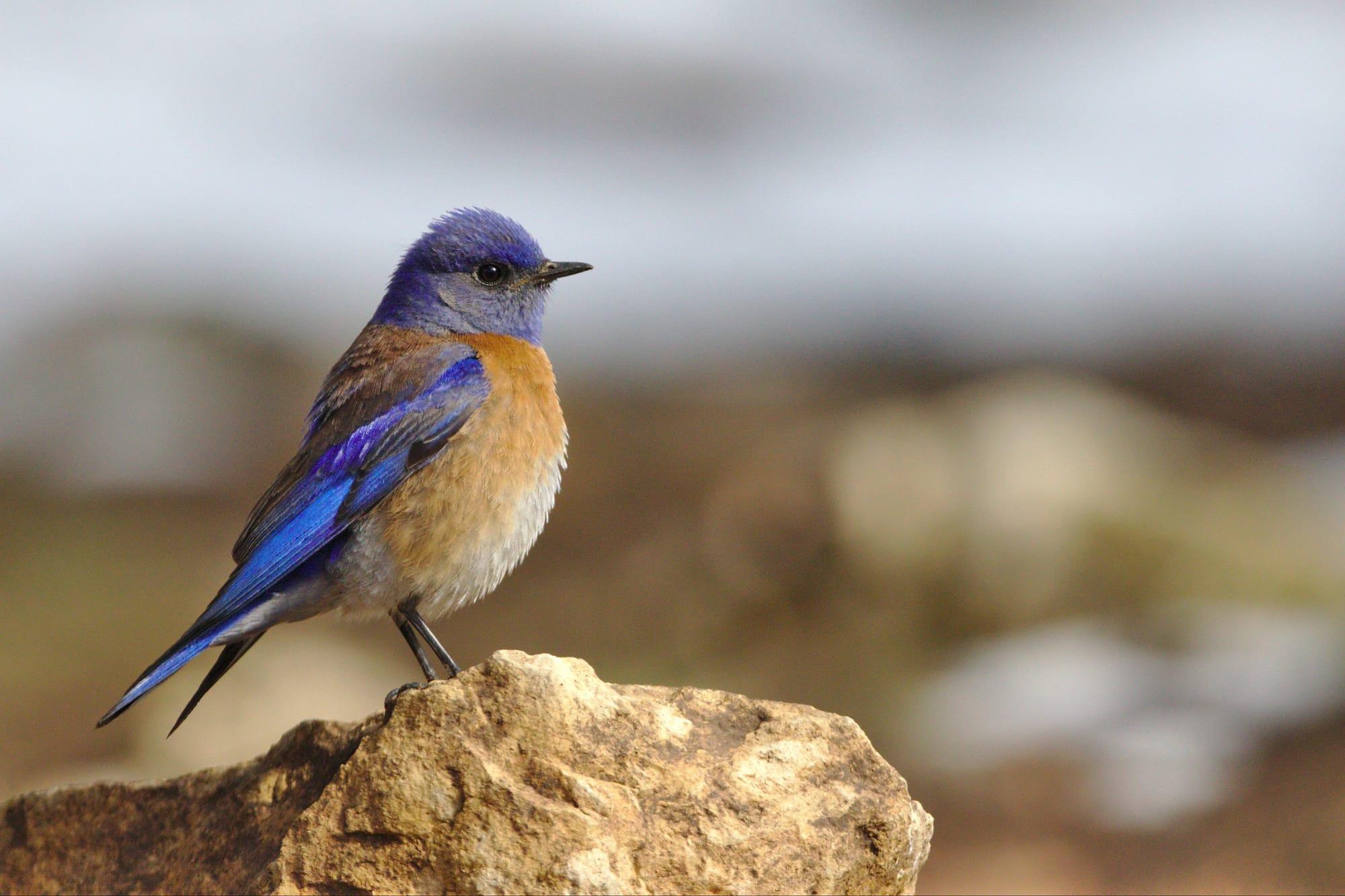The Bluebird of Happiness & Backyard Birding

 The bluebird is a symbol of happiness, good health and prosperity in many cultures and is overwhelmingly popular as an emblem of springtime's renewal. Our Eastern Bluebird is more likely to nest in your yard if it is adjacent to woodlands, fields and open spaces. Mounting specially designed bluebird houses and enhancing their native food supply will encourage their presence.
The bluebird is a symbol of happiness, good health and prosperity in many cultures and is overwhelmingly popular as an emblem of springtime's renewal. Our Eastern Bluebird is more likely to nest in your yard if it is adjacent to woodlands, fields and open spaces. Mounting specially designed bluebird houses and enhancing their native food supply will encourage their presence.
A bluebird's diet is comprised of 2/3 insects, with small fruits rounding out the menu. Caterpillars, beetles and grasshoppers are dined upon with great relish. During summer and fall, raspberries, elderberries, blackberries, currants and grapes are added to the diet. While bluebird conservation efforts and backyard birders are encouraging a rise in population, the initial decline in numbers due to loss of woodlands is still worrisome. Not only have they lost their natural habitat and high perches from which they spot their insect prey, they have lost food sources.
Important considerations: Nest boxes, birdbaths, short grass, predator protection and numerous perching sites. Mealworms (raise your own or purchase freeze-dried specimens), offered in shallow glass or plastic dishes, provide a reliable source of protein especially valuable during changeable spring weather and when nestlings are being fed. Don't forget to share some of those backyard fruits this summer and fall. While March was the ideal time to mount nestboxes, you may have some late arrivals or maybe tree swallows (fantastic at mosquito control) that will inhabit those bluebird houses. It's entirely possible that the bluebird of happiness will frequent your backyard bird sanctuary, starting this spring.


